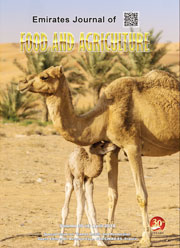Yield and intercropping indices of sweet corn and okra grown in young rubber plantation
DOI:
https://doi.org/10.9755/ejfa.2022.v34.i5.2859Abstract
Intercropping is a labor-intensive practice largely adopted by smallholder farmers to increase yield per unit area, cope with crop failures
and market fluctuations, meet food preferences and increase farm income. A field experiment was conducted to examine the yield
performances and intercropping efficiencies of sweet corn and okra planted in a young rubber plantation. The treatments were arranged
in Randomized Complete Block Design (RCBD) with three replications. The treatments ratios were 20% okra + 80% sweet corn (strip
and strip relay intercropping) with sole okra and sweet corn as the control. This consists of strips intercropping (okra and sweet corn
planted on the same date), strip relay intercropping (sweet corn planted 4 weeks after okra planting), sole okra and sole sweet corn. The
highest yield of okra was obtained from strip relay intercropping while the highest yield of sweet corn was produced from the pattern of
strip intercropping. However, the economic analysis showed that the strip intercropping recorded the maximum gross margin and costbenefit ratio of RM 17,733.20 ha-1 and 2.09, respectively. Immature rubber growth was unaffected by intercropping with sweet corn
and okra crops. Strip intercropping not only resulted in the higher land equivalent ratio (1.29), but also area time equivalent ratio, % land
saved and monetary advantage index of 1.14, 22.28% and RM 7,583.50 ha-1, respectively compared with strip relay intercropping. The
highest assessment of intercropping based on relative crowding coefficient was recorded by strip intercropping with 4.56. With regard
to competition between the intercrops, okra was a more dominant species as measured by the positive value of aggressivity. However,
strip intercropping was indicated the lowest competitive ratio than the strip relay intercropping. Thus, this intercropping pattern could be
recommended to the farmers for adoption.










 .
. 